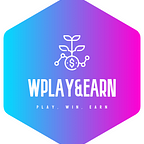Web3 Interoperability: Do NFTs Provide a Solution?
You may want to use or increase utility beyond games of your favorite digital assets and features you liked in Counter-Strike: Global Offensive, CS2, or in other games like Call of Duty: Warzone. Unfortunately, it appears impossible for now, but are NFTs the solution? While encouraging game developers to use a decentralized environment with interchangeable objects can be beneficial, it is far from ideal.
Different people have different perspectives on where the gaming industry is headed. Interoperability may be the next big thing for those who believe NFTs will be the key to transferring ownership and enabling special features for items in different games and apps. Many people, on the other hand, believe the opposite is true.
Interoperability Promotes True Ownership of Digital Assets
Interoperability allows assets to be transferred from one game to another. The concept of true digital asset ownership is evolving, protecting customers from losing hundreds or thousands of dollars invested in a game when a newer, better version is released.
Cryptocurrency proponents argue that NFTs are the solution because each one can stand in for a different item or asset and be used in a variety of games and dapps. However, simply owning a tokenized item that you can bring into virtual worlds and games does not solve the problems with making this system work.
“When you think of interoperability, you imagine: I could take a gun out of Fortnite and it’ll work in Call of Duty,” said Tobias Batton, founder and CEO of Ex Populus. “Of course, that’s never going to work, is it?”
Interoperability in video games has yet to be widely adopted, and it may take some time. Meanwhile, Web3 developers are attempting to pave the way for this new era of gaming, but their efforts have yet to bear fruit.
According to Ryan Gill, the founder of Crucible Network, there are two major barriers to developers creating interoperable games: technical and commercial.
Standards are the First Step
Before assets can be made to work together smoothly, technical standards must be established and widely accepted by the industry. Outside of enabling blockchain assets, there is still work to be done, but NFTs can help make it easier for users to use their stuff between games. While a global coding language would be beneficial, it is not Gill’s top priority.
Transferring assets between games and platforms would be easier if they all used the same file types. Some businesses create policies but never make them available to the public.
To address this issue, developers may collaborate to adopt open file format standards, which could lead to more compatible games in the future.
The Metaverse Standards Forum is dedicated to “fostering interoperability for an open and inclusive metaverse,” as their mission statement states. In June 2022, 37 founding organizations came together to officially launch the initiative to standardize the metaverse. The first members included Meta, Adobe, and Microsoft, and many more have since joined.
The Metaverse Standards Forum has improved communication between the standards development community and the broader industry. The Metaverse Standards Register, an open database for the standardization ecosystem, has been released in pilot form.
There are nine “active domain groups” within the organization, each focusing on a different aspect of interoperability. The “3D Asset Interoperability Domain Group” is one such organization, and its members are working to bridge the gap between the USD and glTF file formats, two popular 3D asset standards.
Creators are Creating
The people in power are rarely the ones who pioneer revolutionary reforms. Currently, the public’s attention is focused on the efforts of smaller games and Web3 firms to embrace and expand the concept of interoperability.
The “end-to-end character system” seen in Ready Player One is compatible with the glTF standard, which is used by many programmers. This lets players take their character with them into other games that run on the startup’s platform. Although it doesn’t help with avatar generation specifically, Crucible Network’s Emergence SDK provides developers with the tools they need for interoperability. While glTF serves as the foundation for the system, VRM, a Japanese standard, is the primary focus.
The gaming industry may never achieve genuine, universal interoperability; instead, it may settle for compartmentalized versions of it, despite the efforts of organizations like the ones listed above to offer developers compatible standards.
Is It the Beginning of Mainstream Adoption?
Even though more independent studios are embracing interoperability, many gamers will remain skeptical until AAA titles join the movement. The Web3 concept of interoperable games and applications will fail if the major companies all stay within their respective ecosystems.
Season 2 of Fortnite, for example, contributed to the game’s unprecedented popularity. Fortnite did not invent this method of making money from a free-to-play game, but it was the most widely used. Due to its obvious success, other massive games such as Call of Duty and League of Legends have adopted the battle pass concept since then.
Popular game developers are probably keeping an eye on this to see if interoperability is a good way to make money from gamers and if NFTs are the best way to offer this feature to a large number of people.
Check out more blockchain gaming by visiting our News, Games, Twitter, and YouTube.
